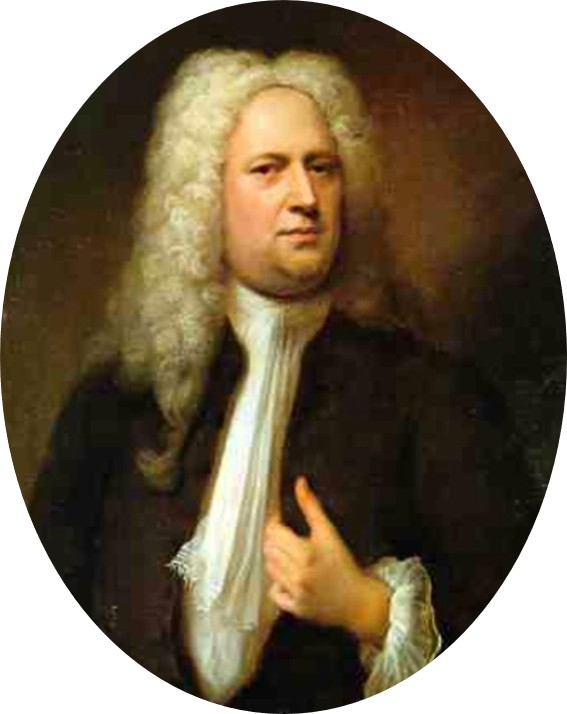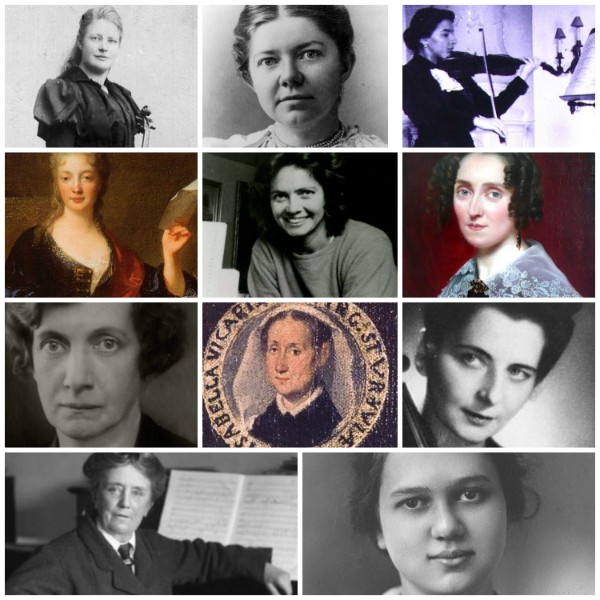In English, ‘the hunt’ means fox hunting, otherwise, it’s shooting (birds) or stalking (deer). In Europe in the 18th century, hunting, usually for deer, was a sport enjoyed by the upper classes, and there was specific music for different parts of the hunt.
In Austria in the 1780s, French hunting fanfares were used, and two particular signals were important: Le depart pour la chasse (the departure for the hunt) and the La retraite prise (Signal to return). Another signal was the cornure d’eau (fanfare when the stag goes into the water), which we will hear more about below.
And we’re off!
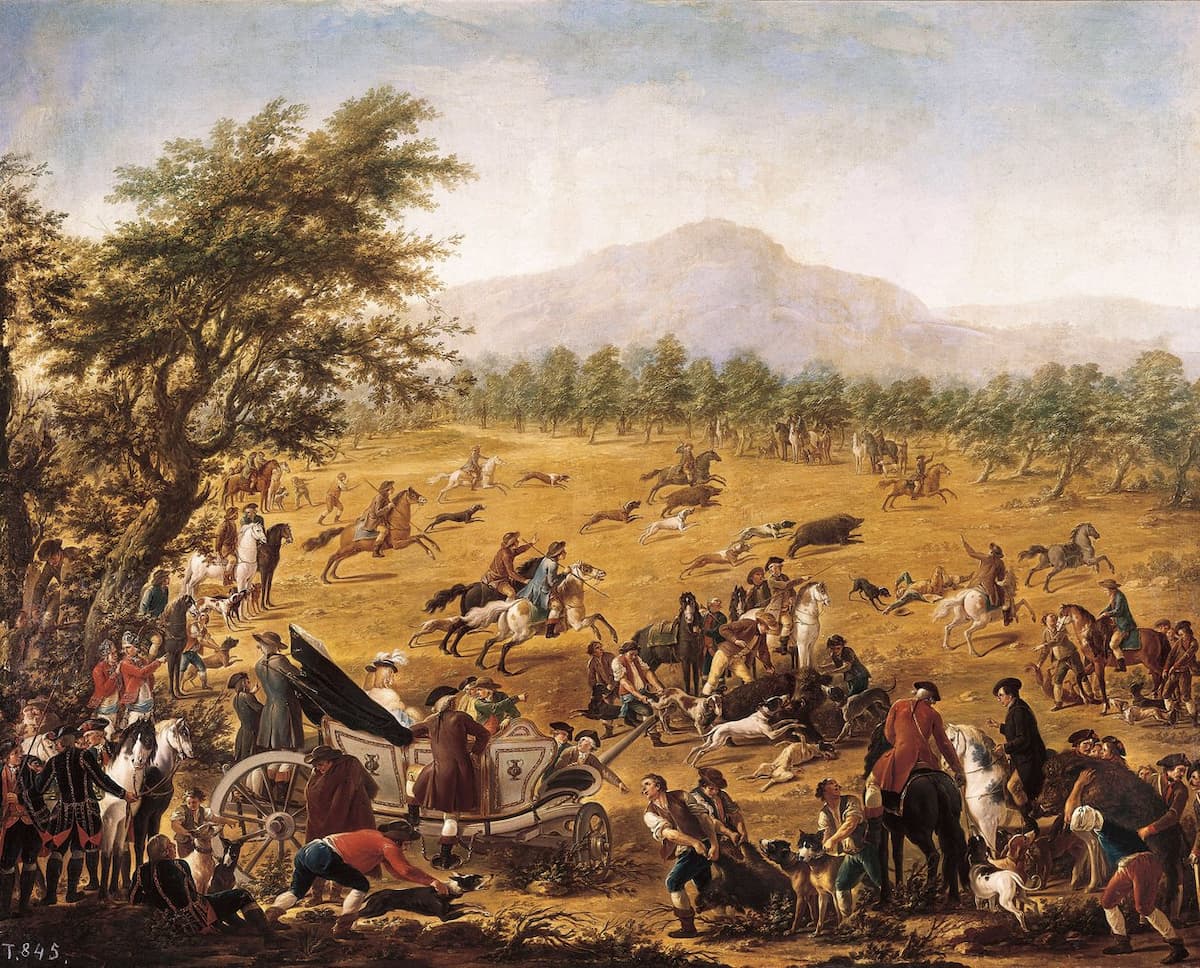
Francisco Celebrano: Monteía (Hunting), c. 1765 (Museo del Prado)
Anonymous: Le depart pour la chasse (Vienna Volksoper Chamber Orchestra; Christoph Campestrini, cond.)
It was inevitable that the excitement of the hunt would make it into music, and one of the first composers to do so was François-Joseph Gossec. Born in the Netherlands, but in Paris by age 17 and, with the help of Rameau, quickly employed as a composer. Although his stage efforts were largely unsuccessful, it was after his founding of the Concerts des amateurs in 1769 and his appointment as leader of the Concerts spirituels that he found his place as a musical leader of Paris. He then became Master of music in the service of the theatre for the Académie Royale, and a director of the Paris opera. In 1784, he reestablished the École Royale for singing, which evolved into the Conservatoire de la Musique in August 1795.
Of his more than 60 symphonies, one is a hunting symphony. At the Concerts spirituels, he commanded a 59-piece orchestra: 13 first and 11 second violins, 4 violas, 10 cellos and 4 double basses with a wind section of 2 flutes, 3 oboes, 2 clarinets, 4 bassoons, 2 horns, 2 trumpets, and 2 kettledrums in the percussion section. In 1774, he gave the premier of his La Chasse Symphony, the first symphony with a hunting theme. This idea was taken up by many who followed, including Joseph Haydn, Etienne-Nicolas Méhul, Anton Rosetti, Carl Stamitz and Paul Wranitzky. Most symphonies followed Gossec’s model: starting with the call to hunt, the galloping of the horses, the barking of the dogs, and the closing in for the kill through to the scramble for the spoils.
Gossec: Symphonie a grand orchestre in D Major, Op. 13, No. 3, “La Chasse” – IV. Tempo di caccia (Concerto Köln, Werner Ehrhardt, cond.)
Muzio Clementi’s 1786 work for piano, La chasse, his version of the hunting scene, fills the first and last movements with horn-calls.
Muzio Clementi: La chasse in D Major, Op. 16 – III. Allegro assai (Rodolfo Leone, piano)
Henri Vieuxtemps’ 1850 work for violin and piano, here arranged for violin solo, is a bravura work that uses scordatura tuning (here, the G string is tuned to B flat) and challenges the performer with a cadenza using false harmonics followed by a gallop to the end. The violinist is tested with challenges such as playing concurrent thirds, sixths, octaves, and, of course, trills.
Henri Vieuxtemps: 3 Morceaux de salon, Op. 32 – No. 3. La Chasse (version for violin solo) (Reto Kuppel, violin)
One of the best-known hunting works was Franz Joseph Haydn’s take on a hunting symphony. Six years after Gossec’s creation of the idea of a hunt symphony, Haydn included hunting themes in the overture to his opera La fedeltà premiata (Fidelity rewarded). The plot is about the goddess of the chase, Diana, and Haydn’s use of hunting calls would have caught the interest of Prince Esterházy.
Joseph Haydn: La fedeltà premiata, Hob. XXVIII -10: Sinfonia (Lausanne Chamber Orchestra; Antal Doráti, cond.)
In 1781, the following year, Haydn took that overture and recast it as the final movement to his Symphony No. 73. Although it’s only this last movement that has the title ‘La Chasse’, that name has been applied, over time, to the entire symphony.
Joseph Haydn: Symphony No. 73 in D Major, Hob.I:73, “La chasse” – IV. La chasse: Presto (Vienna Volksoper Chamber Orchestra; Christoph Campestrini, cond.)
Haydn was reputed to be a passionate huntsman, as was the court of Nikolaus, Prince Esterhazy. In his 1801 oratorio Die Jahreszeiten (The Seasons), the autumn chorus about the hunt is filled with hunting calls.
Joseph Haydn: Die Jahreszeiten (The Seasons), Hob.XXI:3 – Der Herbst (Autumn): Chorus of Countrymen and Hunters: Hört das laute Getön (Gewandhaus Chamber Choir; Leipzig Chamber Orchestra; Morten Schuldt-Jensen, cond.)
Austrian composer and music publisher Franz Anton Hoffmeister started his studies in law and, having completed it decided on a music career. By the 1780s, he was one of the most popular composers in Vienna. In 1784, there was an announcement for ‘An entirely new grand symphony, La Chasse’, which was dedicated to Johanne, Count Esterházy (a different Esterházy branch than Haydn worked for). Again, the familiar horn and melodic themes are used. The last movement is the real hunting piece, with the horns taking the lead position. No ‘real’ horn calls are used in this piece except for the cornure d’eau, marking where the stag has gone into the water.
Franz Anton Hoffmeister: Symphony in D Major, Op. 14, “La chasse” – IV. Allegro con brio (Vienna Volksoper Chamber Orchestra; Christoph Campestrini, cond.)
Another 1784 hunting symphony was by Carl Stamitz. After the slow introduction, a brisk Allegro has us up on horseback, with horns busy calling and motion everywhere around.
Carl Stamitz: Symphony in D Major, “La chasse” – I. Grave – Allegro (London Mozart Players; Matthias Bamert, cond.)
And so we close with Marc-Antoine de Dampierre, Marquis de Dampierre, and his call for all hunters and hounds to return home. In the service of King Louis XV, he first invented the 4.545m hunting horn, wound one-and-a-half turns (see image below) that became known as the ‘Dampierre’ shape. A smaller version, wound two-and-a half turns, was made to celebrate the birth of the Dauphin in September 1729, this was known as the ‘à la Dauphine’ horn and was in use for nearly 150 years. The interior of the bells of hunting horns was normally painted black so that they would not catch the sun and dazzle the horses or huntsmen.
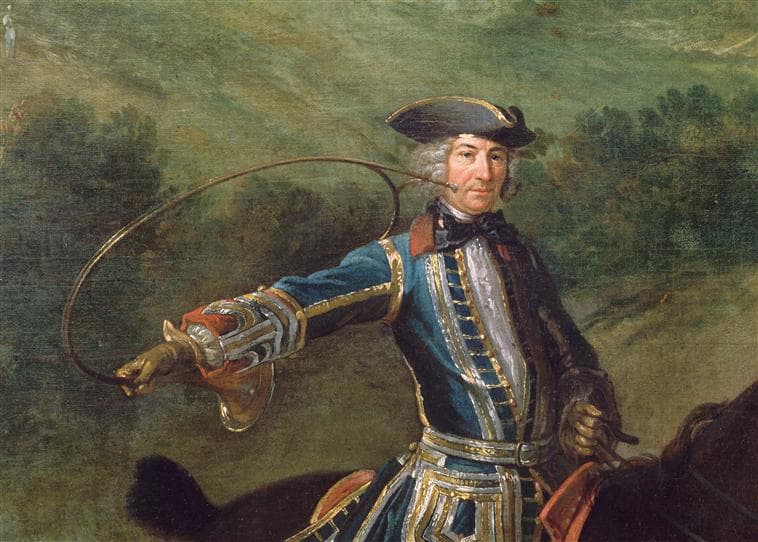
Jean-Baptiste Oudry: Louis XV chassant le cerf dans la forêt de Saint-Germain: Detail: Marc Antoine, marquis de Dampierre, 1730 (Toulouse: Musée des Augustins)
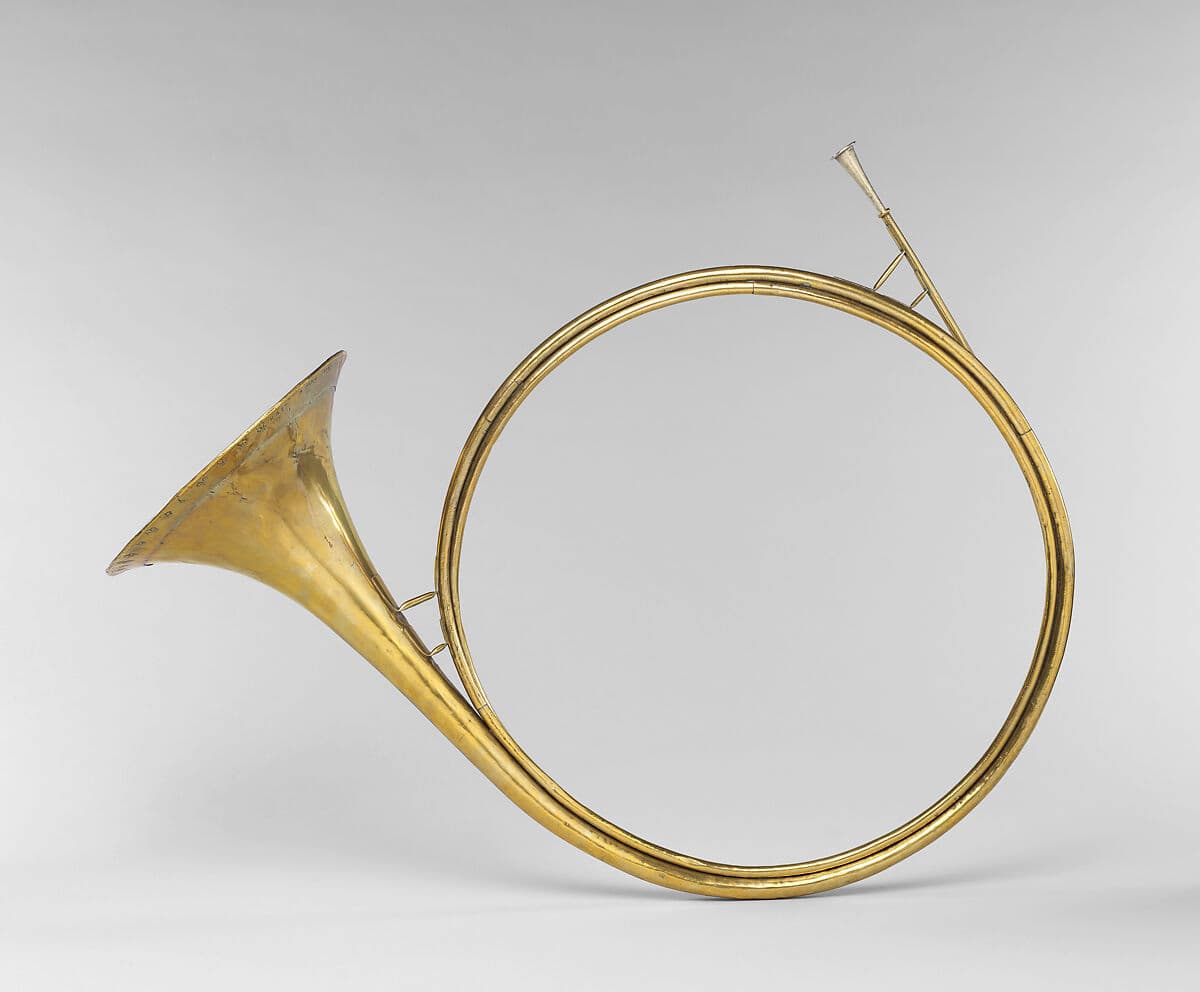
Trompe de chasse “Dauphine” (New York: Met Museum)
Marc-Antoine Marquis de Dampierre: La retraite prise (Vienna Volksoper Chamber Orchestra; Christoph Campestrini, cond.)
Although hunting as a sport is now for the individual rather than a large party on horseback, the musical remains of the 18th century sound come clearly through the music. Hunt symphonies, works for violin and piano, and works for piano also all bear the hunting horn sound. For sporting audience members, it was a way for them to be in on the joke, to be able to read / hear the action that the composer wanted to show.
For more of the best in classical music, sign up for our E-Newsletter

